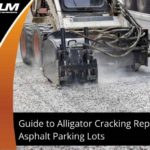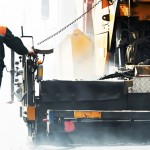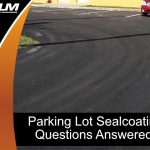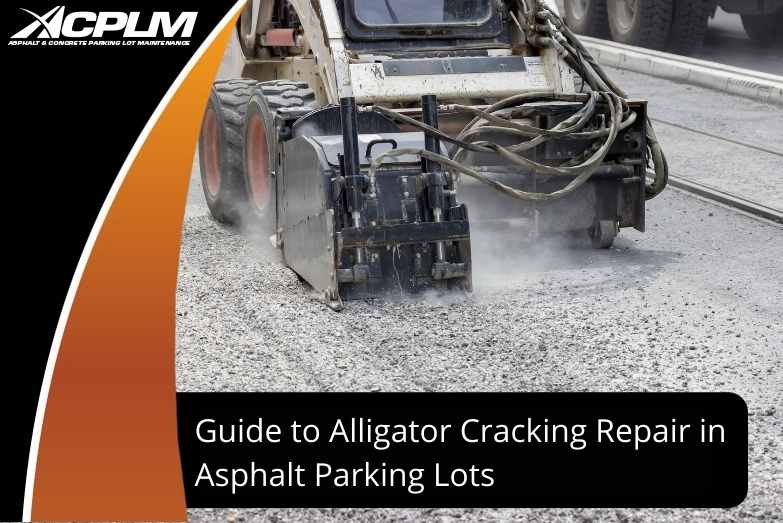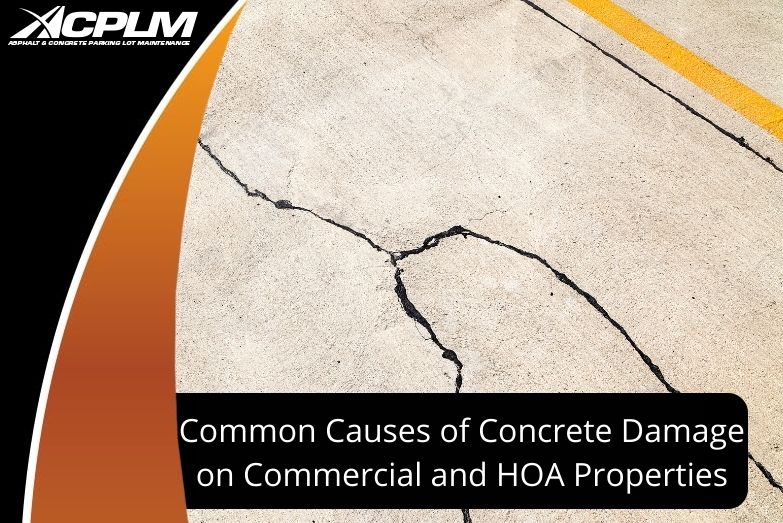
Understand how to spot, prevent, and address concrete damage before it becomes a liability.
Concrete is one of the most durable construction materials used in commercial and HOA properties. From sidewalks and curbs to parking lots and concrete slabs, its longevity and strength make it a go-to material for high-traffic areas. But even though concrete is tough, it’s not indestructible. Without proper care and routine concrete maintenance, even the strongest slab can degrade over time, leading to concrete damage.
To keep your property safe, attractive, and structurally sound, it’s important to recognize the causes and warning signs of concrete damage. Knowing what to look for and what to do about it can save your property thousands in future repairs.
Understanding Concrete Damage
Concrete damage refers to any physical or chemical deterioration that affects the strength, function, or appearance of a concrete surface. From hairline cracks to deep fissures and surface erosion, damage can range from minor blemishes to major structural concerns.
Why Concrete Cracks and Deteriorates
Concrete surfaces are exposed to a wide range of stressors. Over time, these stressors cause visible and hidden signs of wear, such as:
- Cracks in concrete slabs or curbs
- Surface pitting or scaling
- Spalling or flaking of the top layer
- Discoloration and water pooling
- Exposed or corroding steel reinforcement
Let’s break down the most common culprits behind these issues.
1. Water Infiltration and Moisture Damage
Water is one of the most destructive forces acting on concrete structures. When water seeps into small pores or cracks in the surface of concrete, it can cause serious problems over time.
When water reaches the steel reinforcement within a concrete slab, it contributes to corrosion, causing the metal to expand and push against the surrounding concrete, leading to cracks and delamination.
Tip: Proper grading and drainage can reduce the risk of water infiltration and help preserve concrete surfaces for the long term.
2. Corrosion of Steel Reinforcement
Concrete gets much of its strength from steel reinforcement bars (rebar) embedded within it. However, when those bars begin to corrode, often from water and chemical exposure, they expand, placing internal pressure on the surrounding concrete.
Over time, this expansion causes the surface to crack, bulge, or even break apart, exposing more steel and accelerating the damage. Corrosion is a key reason why concrete cracking often begins deep within the structure and spreads outward.
3. Chemical Exposure
Concrete may be resilient, but it’s not immune to damage caused by chemical exposure. Commercial and HOA properties are especially vulnerable to:
- Acidic cleaners or chemical spills from maintenance operations
- Salts and deicers that break down the surface of concrete
- Alkalis and sulfates found in some cleaning agents or landscaping products
Acids with a pH below 3, for example, react aggressively with calcium hydroxide in cement, weakening the structural matrix of the concrete and causing it to dissolve over time.
4. Tree Roots and Vegetation Growth
While trees offer shade and curb appeal, their root systems can wreak havoc on nearby concrete surfaces.
Roots grow beneath concrete slabs in search of moisture, often lifting or shifting the concrete as they expand. This causes uneven surfaces, cracks, and even full separations in sidewalks, walkways, and curbs, creating both trip hazards and structural concerns.
Prevention: Tree placement and routine inspections can help limit root-related damage to concrete over the years.
5. Improper Installation
A concrete slab is only as good as its foundation and installation process. If the mix ratio is off, the surface isn’t leveled properly, or it’s not allowed to cure for the correct amount of time, premature wear and structural issues are likely.
Common results of poor installation include:
- Cracking soon after pouring
- Weak surface layers are prone to abrasion
- Settling or shifting due to inadequate base support
Even small installation mistakes can lead to long-term damage, especially in high-use commercial environments.
6. Loss of Subgrade Support
Concrete needs a stable, compacted base beneath it to remain level and strong. If the soil beneath the slab settles, erodes, or is poorly compacted, the concrete will no longer have adequate support. This can result in:
- Cracking or collapse
- Uneven or sunken areas
- Voids beneath the surface
Common causes of subgrade failure include underground water flow, poor soil conditions, or excessive traffic in the area.
7. Abrasion and Wear from Traffic
Everyday wear and tear is inevitable on commercial and multi-unit residential properties. High foot traffic, vehicle traffic, and heavy equipment all contribute to surface abrasion.
Over time, friction and movement begin to erode the top layer of concrete, especially if the surface was not sealed or maintained properly. This wear can expose the underlying aggregate, reduce traction, and increase the risk of slips, trips, and falls.
8. Extreme Temperatures and Thermal Expansion
Concrete naturally expands and contracts with changes in temperature. Over time, this cycle of expansion and contraction puts stress on the material, especially if there are no expansion joints or they are improperly installed.
The result? Long, visible cracks that may start small but grow with every seasonal cycle.
9. Heavy Loads and Overuse
Commercial parking lots, dumpster pads, loading docks, and walkways often endure weight loads far beyond residential use. When concrete is subjected to constant pressure without proper reinforcement, it can begin to crack and deteriorate.
This is particularly true for properties where large delivery trucks, service vehicles, or equipment frequently pass or park.
Signs of Concrete Damage to Watch For
It’s important to routinely inspect your concrete surfaces and structures for early signs of deterioration. Key warning signs include:
- Hairline or wide cracks in slabs and curbs
- Water pooling or drainage issues
- Spalling (flaking) concrete
- Rust stains from corroded reinforcement
- Uneven or sunken sections of pavement
- Surface discoloration or pitting
- Growth of moss or vegetation through cracks
Catching these problems early can help you avoid more extensive, and expensive, repairs later on.
The Importance of Ongoing Concrete Maintenance
Concrete may seem like a “set-it-and-forget-it” material, but proactive maintenance is essential to preserving its strength and appearance.
A consistent concrete maintenance plan may include:
- Power washing to remove surface contaminants
- Resealing to protect the top layer from water and chemical exposure
- Crack filling and joint resealing
- Slab leveling or mud jacking for sunken areas
- Regular inspections from a trained concrete technician
These actions can greatly extend the lifespan of your concrete and help maintain your property’s value and safety.
Contact ACPLM to Schedule Concrete Repair and Maintenance in Tampa Bay
If your commercial or HOA property is showing signs of concrete damage, don’t wait for the problem to worsen. Professional assessment and timely concrete repair can save you time, money, and prevent liability issues.
Contact ACPLM today to schedule a no-cost consultation for concrete repair, maintenance, or complete resurfacing services. Our team specializes in evaluating concrete damage and implementing long-term solutions for commercial properties throughout Florida. Let us help you restore and protect your concrete surfaces for years to come.

